Development
18 minute read
Web Development Trends That Will Shape 2024.
LAST UPDATED:
May 8, 2024


In the ever-evolving world of website building, staying up to date with the top web development trends is crucial for success. Now that we’ve entered 2024, there are several exciting developments on the horizon that will shape the future of web development. In this article, we will explore the key web development trends, the rise of IoT, influential design trends, and expert insights that will drive the web development landscape.
Technological Web Development Trends in 2024
There has been a lot of progress in web development tech over the last year. With progressive web apps on mobile devices and desktop, AI, voice search, and more—machine learning applications are becoming more advanced and more commonplace.
Let’s break down the web development trends for 2024.
AI and Machine Learning

Artificial Intelligence (AI) and Machine Learning (ML) are revolutionizing various industries, and web development is no exception. AI-powered chatbots and virtual assistants are becoming increasingly popular, providing enhanced user experiences and personalized interactions. Expect to see AI and ML technologies integrated into web development frameworks, making websites smarter and more intuitive. AI and ML have several applications in web development, including:
1. Personalization: AI algorithms analyze user behavior and preferences to deliver personalized content and recommendations. Web development experts can leverage AI to create dynamic web experiences that adapt to individual users, increasing engagement and satisfaction.
2. Chatbots and Virtual Assistants: AI-powered chatbots and virtual assistants are becoming the norm in customer service, and are one of the top web development trends to look at in 2024. These conversational interfaces can handle customer inquiries, provide support, and automate processes, reducing the need for human intervention. Web development experts integrate chatbot APIs and develop the backend logic to enable seamless interactions.
3. Natural Language Processing (NLP): NLP enables computers to understand and respond to human language. Web development experts utilize NLP techniques to build voice-controlled interfaces, facilitate accurate search results, and provide voice-based commands for web applications.
4. Image and Video Analysis: AI algorithms can analyze and interpret images and videos, enabling web development experts to implement features like facial recognition, object detection, and content-based image retrieval. This technology finds applications in fields such as e-commerce, security systems, and content moderation.
5. Sentiment Analysis: AI-driven sentiment analysis tools can process text data and determine sentiment polarity, helping businesses monitor online reputation and gain insights from user-generated content. Web development experts integrate sentiment analysis APIs or develop their own models to extract sentiment information from user feedback and social media data.
6. Content Generation: AI and ML techniques can generate content automatically, such as product descriptions, blog posts, or news articles. Web development experts can utilize these algorithms to automate content creation, saving time and effort while ensuring consistency and quality. This web development trend is already shaking up the industry.
7. Predictive Analytics: ML algorithms can analyze past data to identify patterns and make predictions about future web development trends. Web development experts can incorporate predictive analytics to optimize marketing campaigns, personalize recommendations, forecast user behavior, and improve decision-making.
8. Fraud Detection and Cybersecurity: AI algorithms can detect patterns of fraudulent activities and identify potential security threats in real time. Web development experts can leverage ML models to enhance website security and protect user data against unauthorized access and malicious attacks.
9. Automated Testing and Debugging: AI-based testing frameworks can automate the process of testing and debugging web applications. These tools can identify bugs, suggest fixes, and validate the functionality of the application, reducing the time and effort required for manual testing.
As you can see, AI and ML technologies offer numerous opportunities for web development experts to enhance user experiences, automate processes, improve security, and gain valuable insights from data. By leveraging AI and ML in their projects, development experts can create more intelligent and interactive web applications that meet the evolving needs of users and businesses alike.
Progressive Web Apps
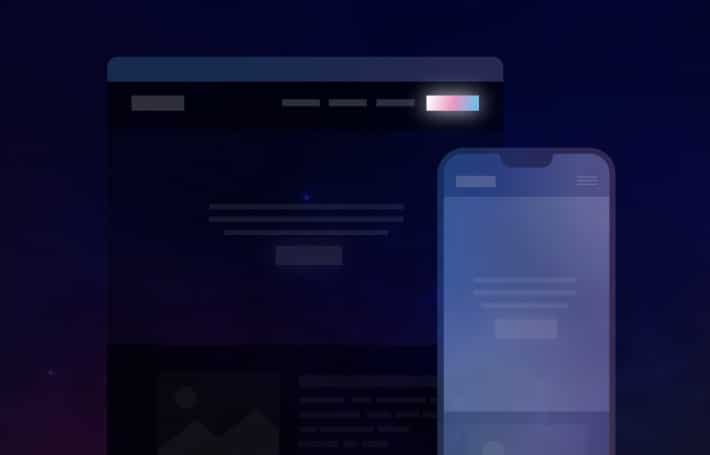
Progressive Web Applications (PWAs) have gained significant traction in recent years and will continue to evolve in 2024. These applications combine the best features of both web and mobile apps, offering fast loading speeds, push notifications, and offline functionality. Progressive web apps provide a seamless user experience across different devices and are set to transform web development practices with accelerated mobile pages.
Single-Page Applications
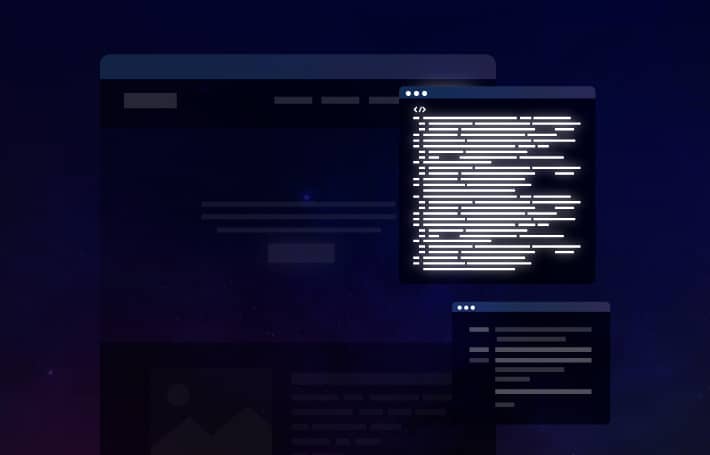
Single-Page Applications (SPAs) have become increasingly prevalent due to their enhanced performance, responsiveness, and improved user experience. With single-page applications, all necessary code is retrieved with a single-page load, resulting in faster navigation and reduced server load. As web development frameworks continue to support single-page applications, they will remain a popular web development trend.
Cloud Computing
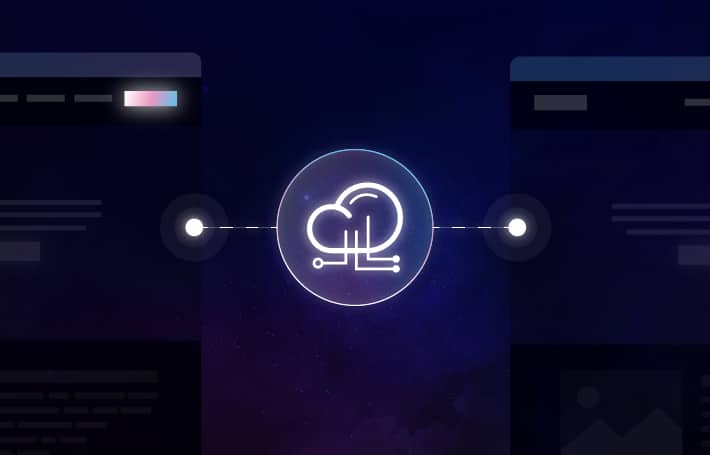
Cloud computing has transformed web application development and deployment. Its scalability, flexibility, and cost-efficiency have made it a preferred choice for businesses seeking website development. In 2024, cloud-based website development will continue to thrive, allowing developers to build and deploy applications more efficiently throughout the web development industry.
Voice Search Optimization
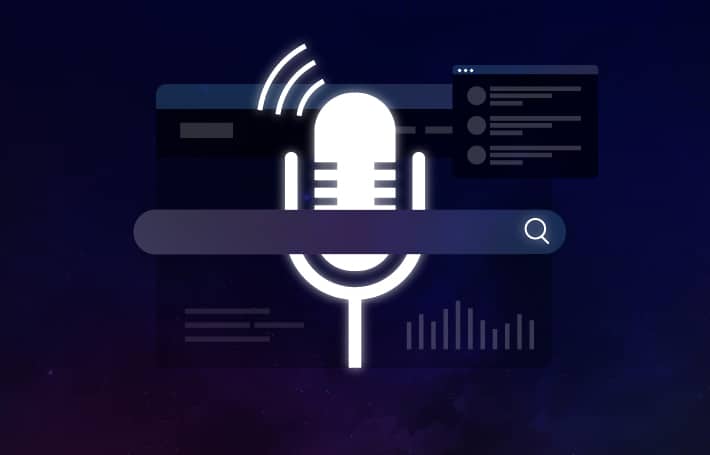
Voice search has seen rapid growth with the rise of smart speakers and digital assistants, qualifying it as one of the top latest web development trends. Optimizing websites for voice search queries will be crucial in 2024. Web developers will need to focus on creating voice-friendly interfaces and implementing structured data to ensure their websites rank well in voice search results. With voice search optimization as one of the leading web development trends, make sure you have the latest web development technologies and a web development process that accounts for this change.
“No Code” Tools
“No code” tools are revolutionizing web design, making the process more accessible to creators of all skill levels. These platforms allow users to build sophisticated websites and applications without needing to know traditional coding languages like HTML, CSS, or JavaScript.
By utilizing intuitive drag-and-drop interfaces, pre-built components, customizable templates, and pre-built components, these tools streamline the development process. From simple landing pages to complex e-commerce sites, “no code” tools can be used to bring ideas to life without the barrier of technical expertise. As these platforms continue to evolve, the future of web design promises to be even more innovative, accessible, and flexible.
The Rise of IoT and Its Impact on Web Development
We can’t talk about web development trends without talking about new web development technologies like Internet of Things (IoT).
Internet of Things (IoT)
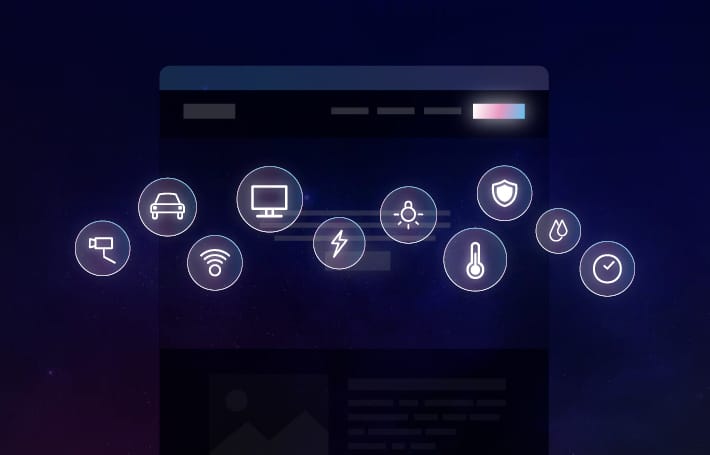
The Internet of Things (IoT) refers to the network of physical objects embedded with sensors, software, and connectivity, allowing them to collect and exchange data over the Internet. As IoT continues to expand, developers will play a crucial role in connecting web applications with IoT devices, enabling seamless interactions and creating a unified user experience. Here are some key aspects of IoT and its impact on web development:
IoT Integration
Web development pros will need to adapt their skills to integrate web applications with IoT devices and platforms. This integration involves establishing communication protocols, leveraging APIs, and working with IoT platforms like AWS IoT, Azure IoT, or Google Cloud IoT. Developers will need to handle device authentication, data synchronization, and real-time data processing to enable meaningful interactions between web applications and connected devices.
Real-time Data Processing
IoT generates a massive amount of real-time data. You will need to design and implement backend systems capable of processing and analyzing this data efficiently. Technologies like MQTT or WebSockets may be used to enable real-time data streaming between IoT devices and web applications, ensuring timely updates and seamless user experiences.
Responsive Design for IoT
With IoT, developers will face new challenges in designing responsive user interfaces that work across a diverse range of IoT device screens and form factors. They will need to consider different display types, input methods, and limited screen sizes to create user-friendly interfaces that adapt to various IoT devices, including wearables, smart home devices, industrial sensors, and more.
Security and Privacy
IoT presents unique security challenges, as interconnected devices can create vulnerabilities in the network. Developers will need to implement robust security measures, including secure communication protocols, encryption, and authentication mechanisms, to protect IoT data and prevent unauthorized access. Privacy considerations become crucial when dealing with personal data collected by IoT devices, requiring developers to adhere to relevant data protection regulations.
Data Visualization and Analytics
Web devs will play a vital role in visualizing IoT data in meaningful and intuitive ways when it comes to creating ways to boost user retention. They will need to utilize data analytics and visualization tools to present insights and trends derived from IoT data, enabling users and businesses to make informed decisions based on real-time information.
Machine Learning in IoT
Combining IoT with machine learning opens up possibilities for intelligent automation and predictive analytics. Website developers can leverage machine learning algorithms to identify patterns, anomalies, and web development trends in IoT data, enabling predictive maintenance, energy optimization, or personalized recommendations based on user behavior.
Scalability and Performance
IoT systems generate large volumes of data, placing demands on the scalability and performance of web applications. Website developers will need to design architectures that can handle the increased data load, employ caching mechanisms, optimize database queries, and ensure efficient data storage and retrieval to deliver responsive and reliable IoT-enabled web applications.
Overall, IoT integration presents both opportunities and challenges for web development experts. By embracing IoT technologies, developers can create innovative web applications that seamlessly interact with interconnected devices, provide real-time data analysis, and deliver personalized experiences. Those who adapt their skills to the IoT landscape will be well-positioned to meet the demands of a connected world in 2024 and beyond.
Edge Computing
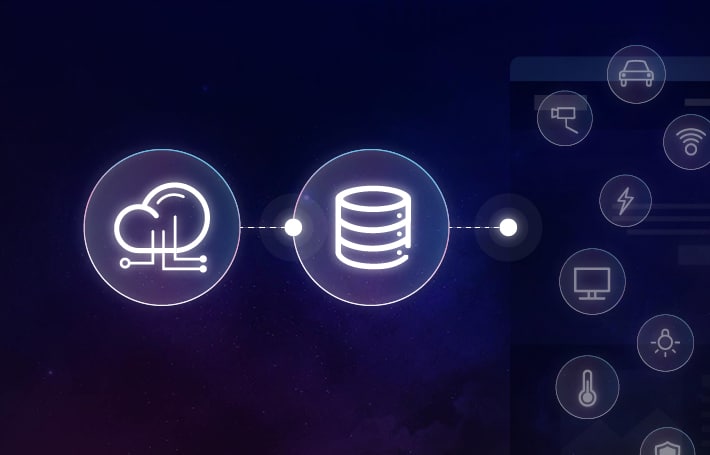
Edge computing brings data processing and analysis closer to the source, reducing latency and improving overall performance in web development. With the proliferation of IoT devices, edge computing will play a crucial role in web development in 2024. Web development professionals will need to optimize their applications for edge computing to ensure optimal performance, reliability, and user experience. They will also need to consider edge computing architectures and work with frameworks specifically designed for edge computing, such as Node-RED or AWS Greengrass.
Chatbots and Virtual Assistants
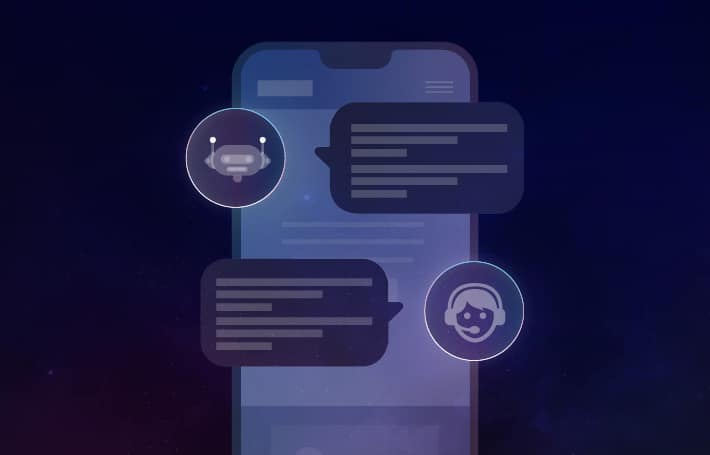
Chatbots and virtual assistants have become integral parts of many websites, providing instant support and personalized interactions. With advancements in natural language processing, these AI-powered virtual assistants will become even more sophisticated in 2024, shaping the way web development experts design and integrate conversational interface web technologies.
Zero Trust Architecture (ZTA)

Data security is a top concern in web development. Zero Trust Architecture (ZTA) provides a comprehensive approach to security by assuming that no internal or external requests can be trusted. In 2024, ZTA will gain prominence in website development, ensuring robust security measures are implemented to protect web and mobile users’ data.
Mixed Reality
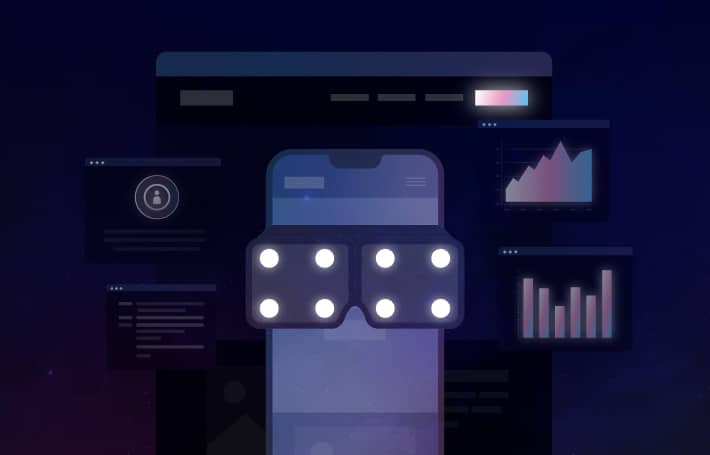
Mixed Reality (MR) in web development combines virtual reality and augmented reality to create immersive user experiences. In 2024, web development experts will tap into MR web development technologies, presenting new opportunities for interactive and engaging web applications and mobile pages. From e-commerce to education, mixed reality will transform how users interact with web content.
Influential Design Trends for Web Developers in 2024
So far, we have just talked about the technical side of the latest web development trends. In order to get the most success out of your web development applications, it’s important to also follow design trends and choose one that works for your brand.
Glassmorphism
Glassmorphism is a design trend that is being seen more and more in web design. It’s characterized by a sleek and futuristic aesthetic reminiscent of frosted glass. This style utilizes blurred backgrounds, translucent panels, and subtle shadows to create a sense of depth and dimensionality. By embracing elements of translucency and light, glassmorphism adds a layer of elegance to user interfaces, elevating the visual appeal and user experience.
The versatility of glassmorphism allows it to be seamlessly weaved into a number of design contexts, from minimalist landing pages to complex application interfaces. As the trend continues to evolve, designers are exploring innovative ways to create immersive and engaging digital experiences with glassmorphism.
3D Experiences
Integrating 3D experiences into web design boosts interactivity and engagement. Technologies like WebGL and Three.js can be used to create immersive environments and lifelike animations. From product showcases to virtual tours, 3D elements offer deeper communication and exploration of complex information. This can be particularly effective in education, gaming, and e-commerce industries. As browsers and devices continue to advance, the potential for 3D in web design continues to grow, guaranteeing increasingly captivating digital experiences.
Maximalist Design
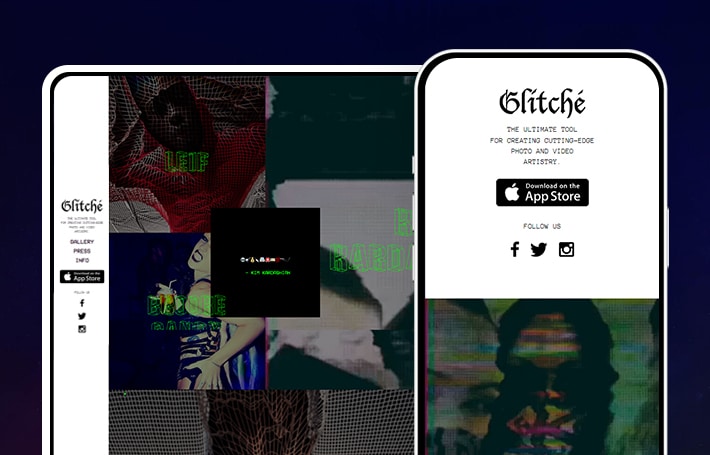
In contrast to minimalism, maximalist design embraces bold colors, vibrant patterns, and rich textures. In fact, it goes beyond being a web development trend; it’s pushing back on the beige and grey interior design for homes that took off thanks to HGTV. This year, like many homes around the world, web development will witness an influx of websites embracing maximalist design principles, creating visually stunning and attention-grabbing experiences for users.
Interactive Storytelling

Interactive storytelling engages and captivates users by involving them in the narrative. Websites will increasingly incorporate interactive elements such as animations, parallax scrolling, and gamification to create immersive storytelling experiences as part of their web development. There’s no doubt that the right interactive elements will drive engagement and set your website and accelerated mobile pages above the competition.
Gradient Tones
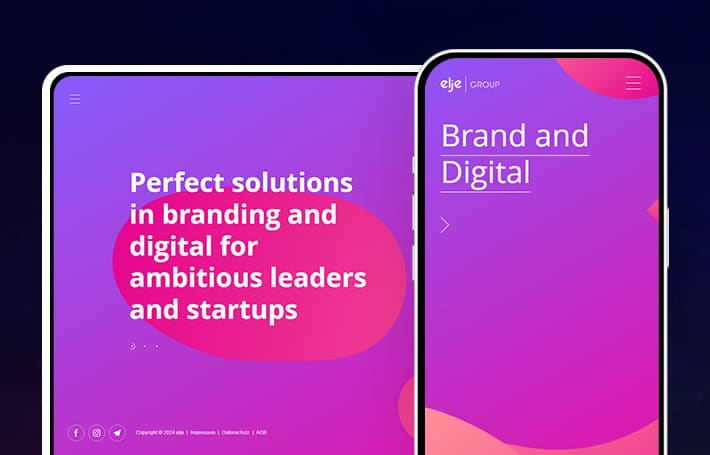
Gradients have made a strong comeback in recent years, and their popularity will continue to grow in web development this year. Web developers will leverage gradient tones to add depth, dimension, and a touch of elegance to website designs, enhancing the overall user experience. When gradients are used in a thoughtful way, brand colors can take on new life and really add to the web development process and overall design.
Handmade Illustrations
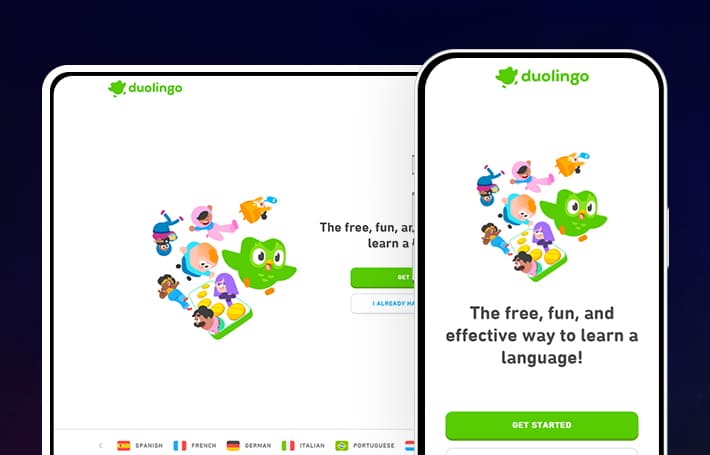
Handmade illustrations bring a unique and personal touch to web designs in web development. More and more, websites will feature custom-made illustrations, offering a distinctive visual identity and fostering emotional connections with users. As many web development trends are technical and modern, using handmade illustrations can be a great way to differentiate and spark warm feelings in website visitors.
Motion UI

Motion UI combines animation and interactive elements to create visually dynamic web experiences. It adds fluidity and interactivity, making interactions more engaging and intuitive. Expect to see an increased use of Motion UI as a web development trend, elevating the overall user experience.
Expert Insights on the Future of Web Development in 2024
Let’s dig a little deeper into these web development trends for 2024 with these expert insights.
Emotionally Intelligent AI
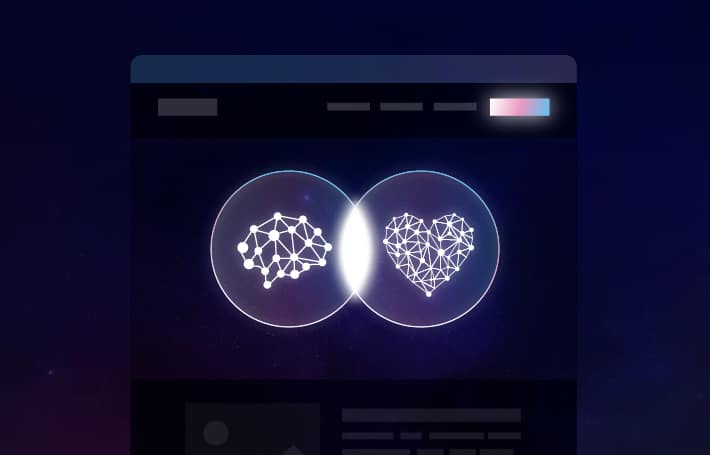
As AI becomes more sophisticated, web development experts will focus on creating emotionally intelligent AI systems that can perceive and respond to human emotions.
In 2024, websites will leverage emotionally intelligent AI to provide personalized experiences that cater to users’ specific needs and preferences.
Cybersecurity and Sustainable Technology

With increasing cybersecurity threats and concerns about environmental sustainability, web developers and other web development professionals will prioritize security and sustainability in their practices.
In 2024, expect to see advancements in cybersecurity measures and the adoption of environmentally friendly web technologies.
Quantum Computing
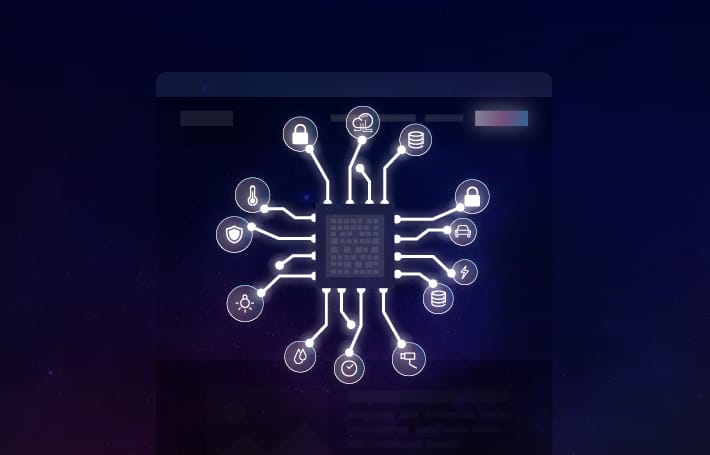
Quantum computing has the potential to revolutionize web development by solving complex problems at an unprecedented speed. While still in its early stages, quantum computing will shape the future of web development by enabling faster data processing and optimization algorithms, leading to lower development costs.
Headless CMS

Headless CMS architecture decouples the backend content management system from the frontend presentation layer, enabling greater flexibility and customization. In 2024, web developers will adopt headless CMS to build more scalable, modular, and future-proof websites and applications to boost user retention.
Challenges and Solutions for Implementing Headless CMS
Despite its benefits, implementing headless CMS can present challenges, such as increased complexity and the need for API integrations within the web app. In 2024, developers will focus on addressing these challenges by adopting best practices, leveraging robust frameworks, and creating seamless workflows to ensure successful implementation.
2024 Web Development Trend Wrap-Up
As we continue further into 2024, web development is set to experience significant advancements and transformative changes. Technological trends like AI and machine learning, PWAs, and voice search optimization will redefine user experiences.
The rise of IoT, coupled with other web development trends and design-related ones like maximalism and interactive storytelling, will create immersive and engaging web applications. Expert web development insights highlight the significance of emotionally intelligent AI, cybersecurity, and quantum computing in shaping the future of web development.
Furthermore, the adoption of headless CMS presents both challenges and solutions for developers seeking scalability and customization. Embracing these trends and insights will empower web development experts to stay at the forefront of their field, delivering innovative and cutting-edge web experiences in 2024 and beyond.
Top Questions About 2024 Web Development Trends
Take a look at common questions we’re seeing when it comes to web development trends!
What is the future of web development in the next 5 years?
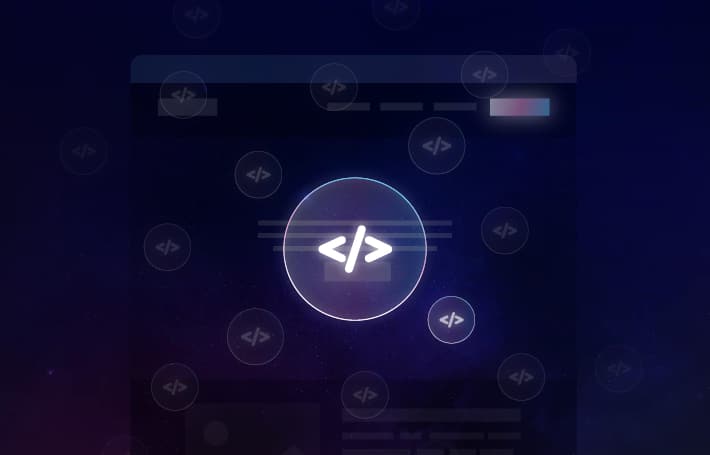
Web development in the next five years is poised for significant growth and innovation, especially with artificial intelligence advancing and evolving as we speak. With the constant evolution of technology, web development experts can expect to work with emerging trends and advancements that will shape the digital landscape. Some key areas that will likely influence the future of website development include:
Progressive Web Applications (PWAs)
PWAs are set to become more prevalent, offering native app-like experiences directly through web browsers. They provide faster load times, offline functionality, and push notifications, allowing users to engage with web applications seamlessly.
Artificial Intelligence (AI) and Machine Learning (ML)
As artificial intelligence (AI) and machine learning (ML) technologies continue to advance, web development experts will incorporate these capabilities to build smarter and more interactive websites. AI-powered chatbots, virtual assistants, personalized content, and predictive analytics will enhance user experiences.
Voice Search Optimization
With the rise of voice assistants and smart speakers, optimizing websites for voice search will become crucial. Web developers will need to adapt to voice user interfaces, implement structured data, and optimize content to rank well in voice search results.
Internet of Things (IoT) Integration
The proliferation of IoT devices will drive the need for web development experts to build seamless integrations between web applications and connected devices. Websites will need to communicate with IoT devices to provide real-time data, control smart home functionalities, and enable remote monitoring and management.
Responsive Design and Mobile-First Approach
Mobile usage continues to grow, making responsive design and mobile-first development crucial. Web developers will need to prioritize optimizing websites for mobile devices, ensuring smooth experiences across different screen sizes and resolutions.
Enhanced Security Measures
With the increasing number of cyber threats, web development experts must prioritize robust security measures. Implementing HTTPS, using secure coding practices, and adopting best security practices will become even more critical to protect user data and ensure trust in web applications.
Overall, the future of web development holds great potential for innovation, improved user experiences, and the integration of trending web development technologies.
What is the trend in JavaScript in 2024?
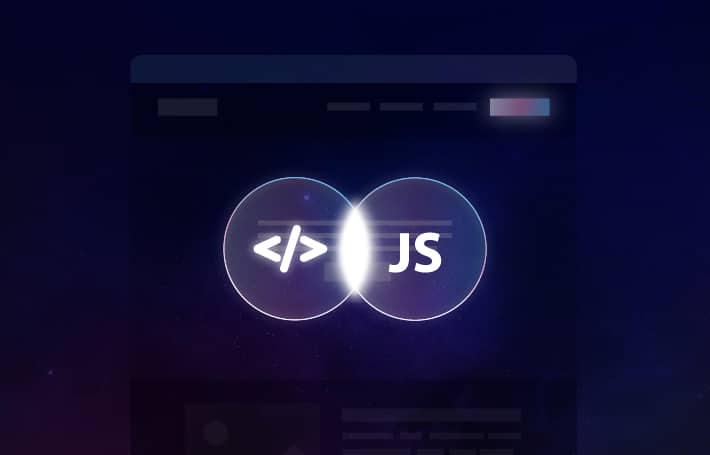
JavaScript is a fundamental language for web development. As such, it is likely to continue evolving and adapting to the changing needs of developers in 2024. Here are some JS web development trends that we can expect:
1. Frameworks and Libraries: JavaScript frameworks like React, Angular, and Vue.js will likely continue to dominate in 2024. These frameworks enable developers to build dynamic, interactive, and efficient web applications. Frameworks that provide server-side rendering (SSR) and static site generation (SSG) capabilities may gain more popularity due to their performance benefits.
2. TypeScript Adoption: TypeScript, a statically typed superset of JavaScript, has been gaining traction, and its popularity is expected to increase in 2024. TypeScript enforces static types, catching errors before runtime and improving code quality, maintainability, and collaboration among developers.
3. Web Assembly (Wasm): Web Assembly is a low-level programming language that enables high-performance execution of code on the web. It allows developers to write applications in other languages like C++, Rust, and Go and compile them into Wasm for running in the browser. In 2024, we can expect JavaScript to work alongside Web Assembly to perform computationally intensive tasks more efficiently.
4. Functional Programming Paradigm: Functional programming, with its focus on immutability and pure functions, has been gaining popularity in recent years. In 2024, we may see an increased adoption of functional programming concepts like higher-order functions, immutability, and declarative coding styles in JavaScript development.
5. Web Components: Web Components, a collection of web APIs, allows developers to create reusable and encapsulated custom HTML elements. With wider browser support and improved tooling, we can anticipate increased usage of Web Components in 2024 for building modular and interoperable web applications.
6. Jamstack Architecture: Jamstack (JavaScript, APIs, and Markup) architecture decouples the front end from the backend, improving performance, scalability, and security. This trend is likely to continue in 2024, where JavaScript-powered static site generators and headless CMSs will gain more popularity.
What is the web development future in 2024?

The web development future in 2024 will be shaped by various trends and advancements. Here’s a glimpse of what we can expect in terms of new web development trends:
1. Enhanced User Experiences: Web development experts will focus on creating highly personalized, immersive, and interactive user experiences. With the help of AI and machine learning, websites will adapt to individual user preferences, making the browsing experience more intuitive, engaging, and efficient.
2. Progressive Web Applications (PWAs): PWAs will continue to evolve, enabling web applications to function like native apps, even in offline scenarios. They will provide features like push notifications, background syncing, and access to device hardware, blurring the line between web and mobile apps.
3. Integration of IoT and Web Development: As the Internet of Things (IoT) expands, web development experts will play a critical role in connecting and interacting with IoT devices. Websites will leverage IoT data, enabling real-time monitoring, control, and automation, transforming industries like smart homes, healthcare, and logistics.
4. Voice Search and AI Assistants: Voice search optimization will become vital as voice assistants continue to gain popularity. Web development experts will optimize websites for voice queries, leveraging AI technologies to understand natural language and provide accurate and relevant search results.
5. Focus on Accessibility and Inclusion: Web development experts will prioritize creating accessible and inclusive web experiences to ensure equal access for all users. This includes adhering to web accessibility guidelines (WCAG), implementing assistive technologies, and considering diverse user needs.
6. Continued Emphasis on Security: With the increasing number of cyber threats, web development experts will focus on implementing robust security measures. This includes stronger authentication mechanisms, multi-factor authentication, encryption, and adherence to security best practices throughout the development process.
7. Simplified Development with Low-Code/No-Code Platforms: Low-code and no-code development platforms will gain popularity, allowing non-technical users to create and launch web applications with minimal coding. Web development experts will leverage these platforms to accelerate development cycles and empower citizen developers.
Overall, the web development future in 2024 will be characterized by enhanced user experiences, integration with emerging technologies, an emphasis on accessibility and security, and the adoption of simplified development approaches.
Will AI replace web developers?
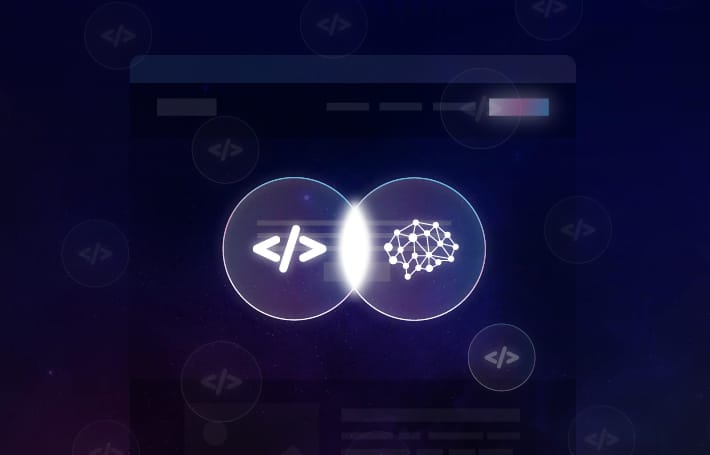
While AI has made significant advancements, it is unlikely to replace web development experts entirely. AI can assist web developers by automating certain tasks, optimizing code generation, and providing suggestions, but human developers bring a unique skill set to the table that cannot be replicated by AI alone.
Web development requires a combination of technical knowledge, problem-solving abilities, creativity, and an understanding of business requirements. Web developers not only write code but also design user interfaces, ensure accessibility, optimize performance, and address the unique needs of each project. They possess critical thinking skills and domain expertise that allow them to create tailored solutions for specific problems.
AI is expected to augment and empower web development experts, making their work more efficient and enabling them to focus on higher-level tasks, innovation, and complex problem-solving. AI can automate repetitive tasks, perform data analysis, and assist in testing and debugging. Web developers will continue to leverage AI tools and technologies to enhance their productivity and deliver higher-quality web applications.
Will web development be in demand in 2025?

Web development is expected to remain in high demand in 2025 and beyond. The increasing digitization of businesses, the growing number of online services, and the need for engaging and functional web applications will ensure a continued demand for skilled web development experts.
As technology advances, there’ll be new web development trends, frameworks, and tools will emerge, requiring web developers to adapt and learn continuously. In 2025, web development experts will be sought after for their expertise in areas such as AI integration, IoT development, cybersecurity, responsive design, and user experience optimization.
Furthermore, with the increasing popularity of e-commerce, online education, remote work, and the continuous reliance on digital platforms, web development skills will be essential for businesses to establish and maintain their online presence.
Get Memorable Insights.
Sign up to receive actionable web design advice directly in your inbox monthly.
Get Memorable Insights.
Sign up to receive actionable web design advice directly in your inbox monthly.
Author
Jeff Gapinski is the President of Huemor where he helps plan the long-term strategic growth of the agency. Jeff is passionate about UI/UX, demand generation, and digital strategy.
What Do You Think?
Have feedback? Maybe some questions? Whatever it is, we'd love to hear from you.




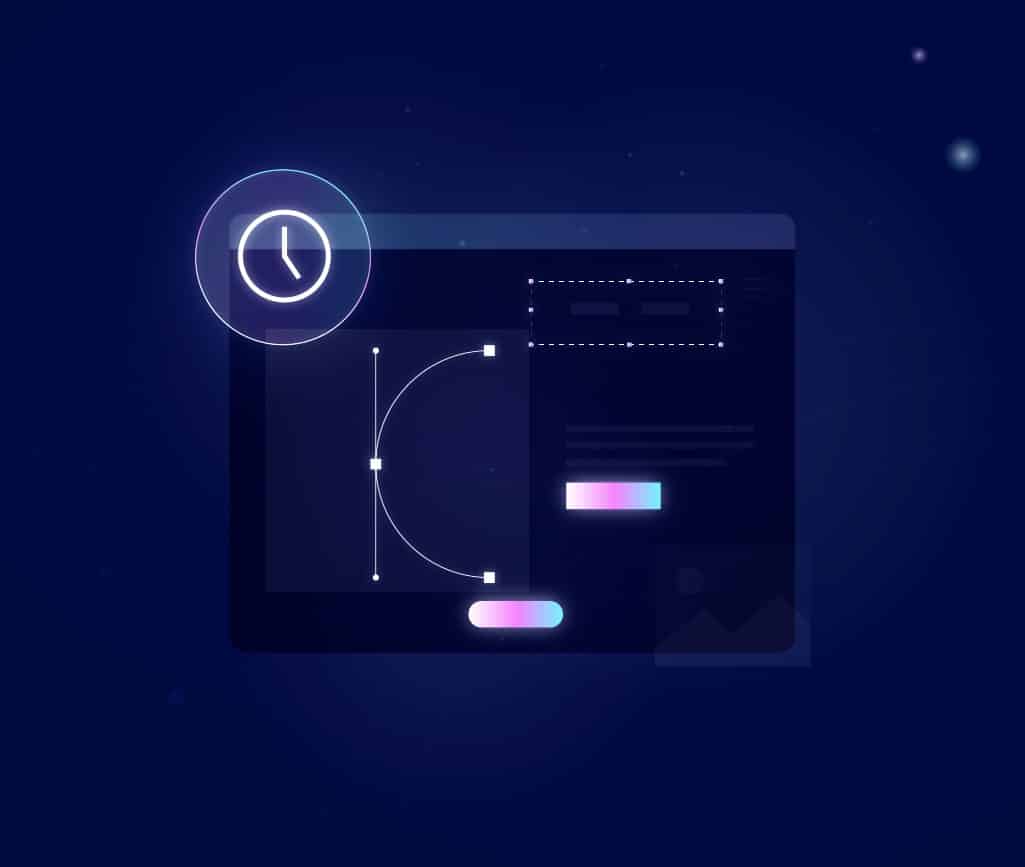


No comments found